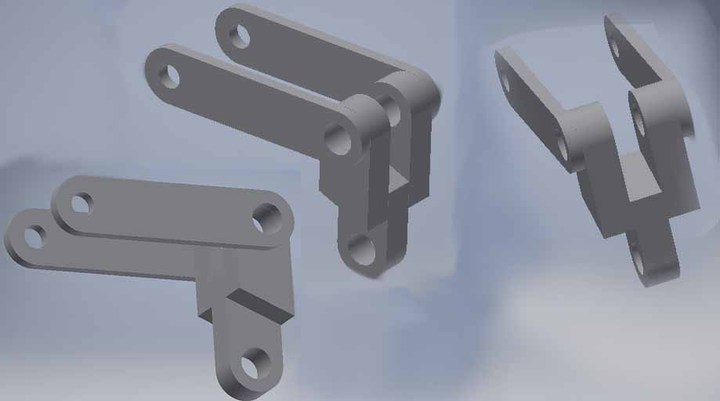It has been a nightmare trying to get this loader on my tractor. I finally have everything mounted and working but the lift cylinders hit the tie rods when bring them all the way down. The easiest way I have come up with to get around this is to move the bottom of the loader cylinder to the outside of its straddle, as you can see in the picture below (I had to link the picture. For some reason I can't get it to post right). I don't have the bucket on so there is no load on the tractor. I went through full motion with the lift arms and mounting these to the outside of the straddle will work.
So my question is what is your input on the best way to make a new straddle? My buddy is out of town right now but he is going to help me when he gets back. He is the welder, but figured I would get some input first so I can make the best educated decision.
This was my idea. Get some angle iron. Weld it to the frame between the drain plug to the left and the cylinder pin to the right. Bring it out and angle to the right. Drill my hole for the pin. Put a piece of flat iron on the bottom and weld to the frame.
Does this seem like a good idea? Any other suggestions? Is it ok to weld to the frame since it holds the internal hydraulic fluid? Is 3/8" steel adequate? Am I missing anything?

So my question is what is your input on the best way to make a new straddle? My buddy is out of town right now but he is going to help me when he gets back. He is the welder, but figured I would get some input first so I can make the best educated decision.
This was my idea. Get some angle iron. Weld it to the frame between the drain plug to the left and the cylinder pin to the right. Bring it out and angle to the right. Drill my hole for the pin. Put a piece of flat iron on the bottom and weld to the frame.
Does this seem like a good idea? Any other suggestions? Is it ok to weld to the frame since it holds the internal hydraulic fluid? Is 3/8" steel adequate? Am I missing anything?










